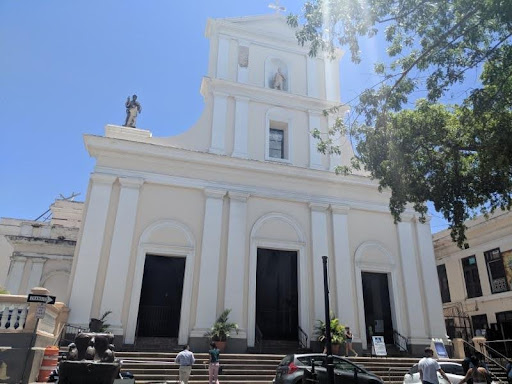San Juan de Giror
Department



Slogan of the city
San Juan de Girón, often referred to simply as Girón, is commonly known as the “City of the Gentlemanly People” (“Ciudad de los Caballeros” in Spanish). This reflects the town’s historical and colonial charm as well as the courtesy and warmth of its inhabitants.
History
San Juan de Girón, established by Francisco Mantilla in 1631, boasts a historic center that’s been designated a cultural landmark, ensuring its preservation. This allows visitors to marvel at its cobblestone streets and houses adorned with whitewashed facades.
Despite its population of 150,000, Girón retains the charm of a quaint town. A day is sufficient to explore its historic center. While many suggested we visit Bucaramanga, a beautiful city just 9 kilometers away, our attention was firmly on Girón.
The city is home to three main squares. The most vibrant is the Parque Principal de Girón, bustling with food vendors and locals seeking relaxation after work. It’s a family-friendly area where kids play freely, and it houses the Basilica Menor San Juan Bautista, a 1639-established pilgrimage site with five altars. In contrast, the Plazuela de Las Nieves offers serenity, hosting the Capilla Nuestra Señora de las Nieves church and vendors peddling handmade crafts.
Although Girón might seem serene, its evenings tell a different story. Our assumption of a peaceful night near a river at the city’s edge was quickly dispelled. Every night, bars come alive with blaring music, a testament to Colombia’s vibrant nightlife. The warm climate means most establishments spill onto the streets, ensuring a lively atmosphere regardless of the weekday. However, the early mornings bring a less pleasant experience — a distant rendering plant emits a pungent odor. Closing the window, I hoped to get a few more hours of sleep.

Geography
San Juan de Girón is strategically located in the northeastern region of Colombia, nestled within the Santander department. Geographically, it sits at coordinates approximately 7.07° N latitude and 73.17° W longitude. Encircled by the majestic Andes Mountains, the city is characterized by a mix of lowlands and hilly terrains, offering both lush green valleys and elevated viewpoints. To the northeast, it is bordered by the city of Lebrija, while to the south, it shares its boundary with the vibrant city of Bucaramanga, just a mere 9 kilometers away. The Rio de Oro flows near Girón, adding to its scenic beauty and providing a natural water resource. To its west, you can find the municipality of Floridablanca, another significant urban center in the Santander department. As you venture further from Girón, you’ll encounter a blend of rural landscapes and small settlements, a testament to the region’s diverse topography and rich agricultural heritage.

Population
206,005 (2020)
One photo representative of the city
Nestled within the historic confines of San Juan de Girón, a charming town in Colombia renowned for its beautifully preserved colonial architecture, stands the magnificent Basílica Menor de San Juan Bautista. A beacon of spiritual solace, historical gravitas, and architectural splendor, the basilica stands as a testament to Girón’s rich cultural heritage and its deep-rooted Spanish colonial influences.
The Basílica Menor de San Juan Bautista is not just any church; it is a symbol of the town’s history and a focal point of its identity. As the cornerstone of the town, it has witnessed countless moments of celebration, sorrow, hope, and faith. Its towering presence reminds both locals and visitors of Girón’s legacy and the pivotal role the church has played in weaving the social and spiritual fabric of the community.
Constructed during the 17th century, the basilica showcases exquisite examples of Spanish colonial architecture. Its façade, adorned with intricate stucco work and flanked by robust columns, is an immediate draw for the eye. The building’s whitewashed walls are symbolic of many colonial churches in Latin America, which often served as both spiritual centers and strongholds during turbulent times. Above the main entrance, the beautifully crafted wooden doors are original to the basilica, each narrating tales from the Bible through their carved depictions.
As you step inside, the vast expanse of the basilica’s nave welcomes you. The interiors are a symphony of ornate altars, gold leaf detailing, and stunning frescoes. The central altar, dedicated to San Juan Bautista, is a masterpiece in itself. Rich in gold detailing and flanked by statues of saints, it stands as a testament to the craftsmanship and dedication of the artisans of its time. The church’s ceiling, adorned with painted biblical scenes, offers a celestial ambiance, making the basilica a haven of tranquility amidst the bustling town.
One cannot discuss the Basílica Menor de San Juan Bautista without mentioning its majestic bell tower. Rising high, it has been a silent witness to the town’s evolution, marking the passage of time with its melodious chimes. The tower, apart from its functional role, adds a distinctive charm to the basilica’s silhouette, making it an unmistakable landmark in Girón’s skyline.
The basilica’s significance isn’t limited to its architectural prowess. Over the centuries, it has played host to numerous religious festivities, processions, and pilgrimages. For the residents of Girón, the basilica is not merely a place of worship; it’s where life’s significant moments are commemorated – be it a baptism, a wedding, or a final goodbye.
Furthermore, the basilica has been instrumental in fostering a sense of community. The church’s courtyards and adjoining squares have seen countless gatherings, from Sunday masses to vibrant local festivals, where generations of families come together in celebration and prayer.
To the modern visitor, the Basílica Menor de San Juan Bautista offers a journey back in time. Walking its aisles and admiring its artistry offers a palpable sense of connection to the past. Every corner whispers tales of bygone eras, of faith, of resilience, and of a community’s undying spirit.

Etymology
The “San Juan” portion of the name is a dedication to Saint John the Baptist, the patron saint of the town. Throughout Latin America and the world, many towns and cities are named after saints, showcasing the deep influence of Christianity, particularly Catholicism, in shaping societies and communities. The dedication to Saint John the Baptist is evident in the town’s main basilica – the Basílica
Menor de San Juan Bautista.
The latter part of the name, “Girón,” pays homage to the Spanish conquistador Hernán Pérez de Girón. He was one of the early colonizers and played a part in the region’s history. Naming towns after influential figures, be they religious or secular, is a common practice and serves to immortalize their impact and significance in the region’s history.
Thus, the name San Juan de Girón is a reflection of both spiritual reverence and historical recognition, encapsulating the town’s rich past and deep-rooted cultural and religious ties
What the city is known or famous for
San Juan de Girón, commonly referred to as Girón, is renowned for its exquisite craftsmanship and local goods. The town’s artisans take pride in their skills, passed down through generations, producing a myriad of handcrafted items that captivate visitors and locals alike.
From intricately designed leatherwork to delicate jewelry, the range of products showcases the town’s rich cultural heritage and commitment to preserving traditional crafts. Hand-woven textiles, ceramic pottery, and wood-carved artifacts are some of the other popular items that resonate with the town’s historical essence.
Local markets and quaint shops dot the cobbled streets of Girón, where artisans display their works, offering a unique shopping experience. Visitors are often enchanted by the attention to detail and the stories each piece carries, reflecting the artisan’s passion and the town’s legacy.
Furthermore, Girón’s local goods are not just limited to crafts. The town is also known for its gastronomic delights, with traditional sweets, baked goods, and beverages that have been part of the community’s culinary repertoire for centuries.
